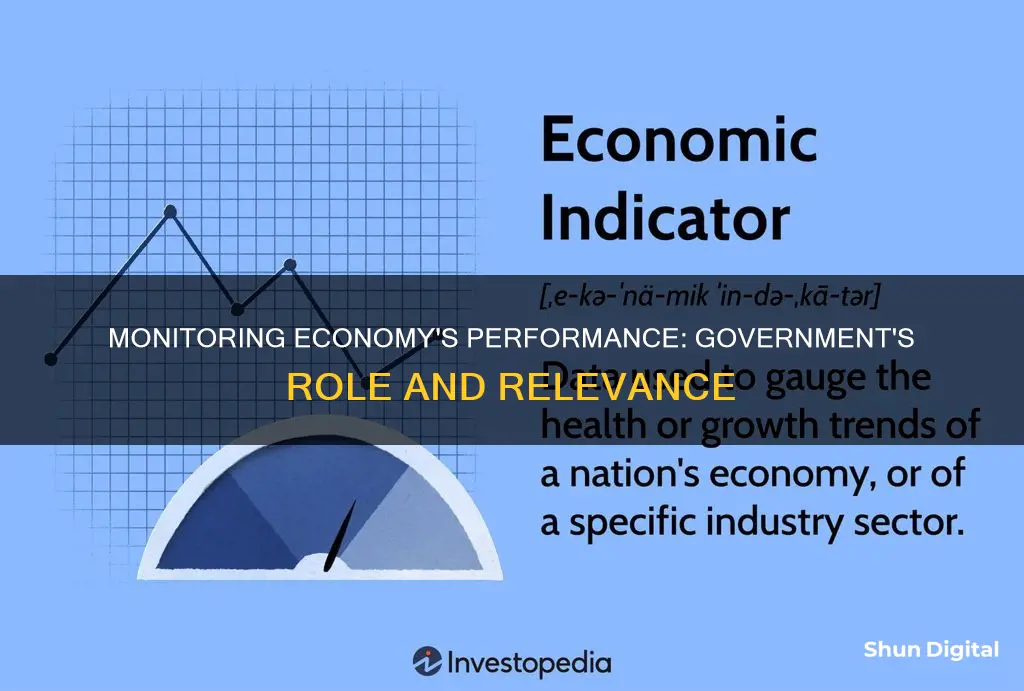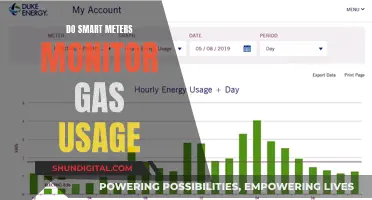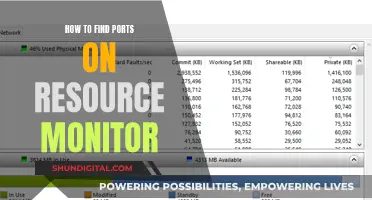
Monitoring the economy's performance is crucial for governments to make informed decisions and ensure the well-being of their citizens. Economic indicators such as Gross Domestic Product (GDP), consumption, investment, international trade, and stability metrics provide insights into the health of an economy. Governments use these indicators to track growth, identify contractions, and formulate policies to achieve economic goals. By analyzing data on macroeconomic performance and stability, governments can influence economic activity through monetary and fiscal policies, adjusting interest rates, taxation, and spending to promote growth, full employment, and price stability. Ultimately, the government's active role in managing the economy aims to preserve and enhance the economic interests of the general public.
What You'll Learn

Monetary policy
In the United States, the Federal Reserve Bank implements monetary policy through a dual mandate to achieve maximum employment while keeping inflation in check. The Federal Open Market Committee (FOMC) meets eight times a year to determine changes to the nation's monetary policies. The FOMC comprises the members of the Board of Governors, the president of the Federal Reserve Bank of New York, and four of the remaining 11 Reserve Bank presidents.
The FOMC's primary means of adjusting monetary policy is by changing its target for the federal funds rate, which is the rate that banks pay for overnight borrowing in the federal funds market. Changes in the federal funds rate influence other interest rates, which then influence borrowing costs for households and businesses, as well as broader financial conditions. For example, when interest rates go down, it becomes cheaper to borrow, so households are more willing to buy goods and services, and businesses are more likely to purchase items to expand their operations, such as property and equipment. This increased spending creates greater demand for goods and services, which spurs businesses to hire more workers, influencing employment.
Managing Diabetic Neuropathy While Wearing an Ankle Monitor
You may want to see also

Fiscal policy
During a recession, a government may employ expansionary fiscal policy to encourage demand and spur economic growth. This involves lowering tax rates or increasing government spending. For example, during the Great Depression of the 1930s, US President Franklin D. Roosevelt implemented an expansionary fiscal policy, creating new government agencies and programs like the WPA jobs program and the Social Security program. These efforts helped pull the country out of the Depression.
On the other hand, when an economy is overheating and inflation is a concern, a government may employ contractionary fiscal policy to cool it down. This involves raising tax rates or cutting spending. For instance, if inflation is high, a government may reduce its spending on public works, which can slow economic growth.
The two types of fiscal policy have different impacts on the economy. Expansionary fiscal policy increases aggregate demand by putting more money into consumers' pockets, either through lower taxes or increased government spending. This leads to higher consumption, which in turn raises aggregate demand and fuels economic growth. Contractionary fiscal policy, on the other hand, reduces aggregate demand by decreasing consumers' disposable income, which can lead to lower consumption and slower economic growth.
While fiscal policy is a powerful tool, it has limitations. One challenge is the "inside lag," which refers to the time gap between recognizing the need for fiscal policy and its implementation by policymakers. Additionally, the effectiveness of fiscal policy can be limited by political constraints, as it is often unpopular for politicians to raise taxes or cut spending.
Simple Ways to Check if Your Monitor is 1080p
You may want to see also

Economic indicators
The most widely used economic indicators are released by governments, non-profit organisations, and universities. These indicators can be leading, which tend to precede trends; lagging, which confirm trends; or coincident, which occur simultaneously with economic conditions.
- Gross Domestic Product (GDP): This is the most common measure of economic growth. GDP measures the value of goods and services produced within a country's borders. It is often used as a proxy for monetary expenditures.
- Gross National Product (GNP): GNP is an economic indicator that measures the total income of a country's citizens within a given period and how they use their income. Unlike GDP, it does not take into account the income of non-residents within the country's territory.
- Consumer Price Index (CPI): This measures pricing power and inflation.
- Unemployment figures: These inform policymakers, companies, and investors about the current state of the economy and can indicate where the economy is headed.
- Interest rates: These reflect the cost of money and can impact economic activity.
- Money supply: The amount of money in an economy can be influenced by government policies and can impact economic growth and inflation.
- Government budgets: These reflect government incomes and expenditures, and can impact the economy through changes in taxation and spending.
- International trade: The balance of payments monitors a country's international transactions and can indicate the health of an economy.
- Productivity metrics: Organisations like the Bureau of Labor Statistics (BLS) and the Organisation for Economic Co-operation and Development (OECD) keep relative productivity metrics to gauge economic potential.
Troubleshooting Guide: Is Your LCD Monitor Broken?
You may want to see also

Government intervention
Governments monitor the performance of their economies to inform policy changes and interventions. In the US, the government uses two types of policies to influence economic performance: monetary policy and fiscal policy. Both have the same purpose: to help the economy achieve growth, full employment, and price stability.
Monetary Policy
Monetary policy is used to control the money supply and interest rates. It is exercised by the Federal Reserve System (the Fed), which has the power to control the money supply and interest rates. The Fed can decrease or increase the money supply and raise or lower short-term interest rates, making it harder or easier to borrow money. When the Fed believes that inflation is a problem, it will use contractionary policy to decrease the money supply and raise interest rates. When rates are higher, borrowers have to pay more for the money they borrow, and banks are more selective in making loans. The Fed will typically tighten or decrease the money supply during inflationary periods, making it harder to borrow money.
To counter a recession, the Fed uses expansionary policy to increase the money supply and reduce interest rates. With lower interest rates, it’s cheaper to borrow money, and banks are more willing to lend it. Attractive interest rates encourage businesses to borrow money to expand production and encourage consumers to buy more goods and services. In theory, both sets of actions will help the economy escape or come out of a recession.
Fiscal Policy
Fiscal policy relies on the government’s powers of spending and taxation. Both taxation and government spending can be used to reduce or increase the total supply of money in the economy. When the country is in a recession, the government will increase spending, reduce taxes, or do both to expand the economy. When we’re experiencing inflation, the government will decrease spending or increase taxes, or both. Because such contractionary measures reduce spending by businesses and consumers, prices come down and inflation eases.
If, in any given year, the government takes in more money (through taxes) than it spends on goods and services (for things such as defence, transportation, and social services), the result is a budget surplus. If, on the other hand, the government spends more than it takes in, we have a budget deficit (which the government pays off by borrowing).
Other Economic Indicators
Other economic indicators include the Consumer Price Index (CPI), gross national product (GNP), unemployment figures, and interest rates.
Performance Monitoring: Managing Projects with Real-Time Data
You may want to see also

Economic growth
To promote economic growth, governments use fiscal and monetary policies. Fiscal policy involves adjusting government spending and tax rates. For example, during a recession, a government may increase spending, reduce taxes, or both to put more money in the hands of businesses and consumers, encouraging expansion. Monetary policy, on the other hand, involves controlling the money supply and interest rates, usually through a central bank like the US Federal Reserve. During a recession, a central bank may employ expansionary monetary policy by increasing the money supply and lowering interest rates to make borrowing cheaper and encourage economic activity.
Overall, governments have a vested interest in promoting economic growth and employ various tools and metrics to achieve this goal. While economic growth is a key indicator of a country's progress and development, it is essential to recognise the limitations of the available measurement tools and interpret the data carefully.
Ankle Monitors: ICE's Surveillance Strategy
You may want to see also
Frequently asked questions
The government monitors the economy's performance to ensure strong economic growth, achieve full employment, and maintain price stability.
The government uses economic indicators such as Gross Domestic Product (GDP), Gross National Product (GNP), consumption, investment, international trade, central government budgets, prices, money supply, and the balance of payments.
The government responds to economic activity through fiscal and monetary policies. Fiscal policy involves adjusting government spending and tax rates, while monetary policy involves controlling the money supply and interest rates.
GDP is considered an important economic indicator as it measures the total value of goods and services produced within a country, providing a proxy for monetary expenditures and economic growth.
The government's monitoring and intervention in the economy can impact individuals through changes in tax rates, interest rates on loans and savings, employment opportunities, and overall economic stability.







